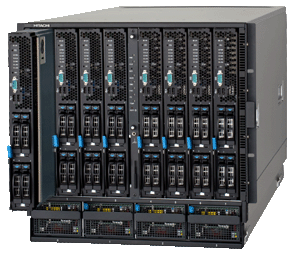Red Hat Enterprise Linux and Hitachi partner to break a record
 There are many records available to be broken -- worlds tallest man, biggest hamburger or loudest crowd, to name a few. However, in the technology sector, there are records to break too; namely benchmarks. A benchmark is a way to test performance of both hardware and software. Red Hat announces that in a partnership with Hitachi, they too have broken a record -- the largest TPC-H database benchmark ever published.
There are many records available to be broken -- worlds tallest man, biggest hamburger or loudest crowd, to name a few. However, in the technology sector, there are records to break too; namely benchmarks. A benchmark is a way to test performance of both hardware and software. Red Hat announces that in a partnership with Hitachi, they too have broken a record -- the largest TPC-H database benchmark ever published.
"As a testament to Red Hat's continued innovation, the Red Hat Enterprise Linux team is pleased to announce that longtime Red Hat partner Hitachi, a leading global social innovation company with headquarters in Tokyo, has chosen Red Hat Enterprise Linux 6 for the largest TPC-H database benchmark ever published at a scale factor of 100 Terabytes (100,000 Gigabytes)", says Red Hat.
The company further says, "running on Hitachi's BladeSymphony BS2000 hardware and using Hitachi Advanced Data Binder database, Red Hat Enterprise Linux played an integral role in the first ever TPC-H result at the 100TB scale factor. The TPC-H benchmark measures decision support performance using a suite of business-oriented ad hoc queries and concurrent data modifications".
I reached out to Red Hat to better explain what a TPC-H benchmark actually is.
According to Yan Fisher, senior principal product marketing manager for Red Hat, "the TPC-H benchmark is used to evaluate the performance of business intelligence/data warehousing (BIDW) and decision support (DSS) systems for various standard database sizes, referred to as the scale factor (SF). The benchmark measures the combined performance of a particular database manager on a specific computer system at various scale factors".
He further explains, "this is not a transactional benchmark, i.e. the database is not modified in real time; instead a series of batch operations are performed against existing data, which is mostly read and seldom written. From a real world perspective, data warehousing (and the scalability thereof) allows analysts to scour vast repositories of customer and market information to uncover new markets, opportunities and cost-saving measures, a vital capability in a data-heavy world".
Obviously, this is a very important benchmark and it speaks volumes that Hitachi chose Red Hat Enterprise Linux to run it. This can be seen as yet another win for the billion-dollar Linux-focused company and the Linux community overall.
